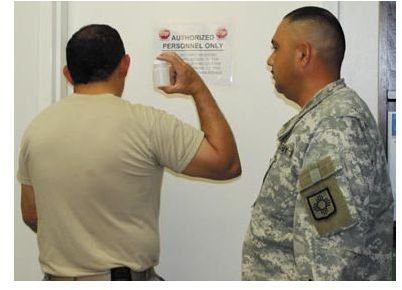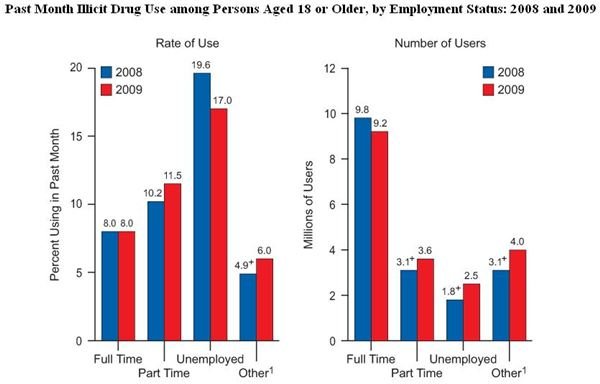Business Ethics and Drug Testing
The Purpose of Drug-Testing in the Workplace
Business ethics and drug testing programs in the workplace have become critical issues for employers and human resource managers, since there are those who view drug testing as a violation of privacy rights.
It cannot be helped that employers regard substance abuse as a potential threat to business reputation, productivity and security. Based on the results of the 2009 National Survey on Drug Use and Health, the percentage of illicit users who were employed full-time remained constant at 8% from 2008 to 2009; while the percentage of workers who were employed on a part time basis increased from 10.2% in 2008 to 11.5% in 2009.
However, getting your employees to undergo testing procedures is considered unethical, albeit legal. But what exactly is unethical about it?
What Makes Testing an Employee for Drug Use Unethical?

If an individual refuses to undergo the testing examination, an applicant or an employee can be terminated or rejected outright. This is the point at which employers can encounter legal engtanglements because drug testing in the workplace is said to be:
-
An unwarranted search procedure - Some consider this unlawful because the employee or applicant concerned is technically being subjected to unwarranted search procedures. The employer may only be fishing for evidence, which he or she can possibly use for purposes other than what was purported.
-
<em>An invasion of privacy</em> -- Urine samples are considered personal, and any information that can be derived from its analysis can reveal information apart from the test’s main objective.
-
A denial of one’s rights to due process of law – Under the due process of law, a person should not be judged until he or she has been proved guilty and the burden of producing proof is upon his accuser. In being required to submit to drug-use testing, the employee or applicant is already presumed guilty and has to show proof that he is not.
-
Questionable as to the validity of the test results – It is a known fact that test results can be botched-up or rigged; thus, the fate of an employee or applicant is in the hands of persons whose competence he has no way of determining. This issue about validity is likewise supported by courts because results of urine testing as proof of illicit drug use are sometimes inadmissible in court.
After getting acquainted with the unethical aspects, how can these issues be remedied by workplace procedures that meet the standards of business ethics? Drug testing results are likewise required in several establishments for purposes of complying with federal requirements, yet there are no known controversies that surround their implementation.
Inasmuch as an employer’s intent and purposes are basically the same as that of the federal government, then it would be best if the former make use of the same guidelines and methodologies that have been standardized by the Substance Abuse and Mental Health Services Administration (SAMHSA. ) Accordingly, several court rulings are supported by this set of guidelines since they conform to what is legal and ethical for drug testing in the business and workplace.
Recommended Workplace Drug Testing Policies and Procedures

As part of meeting the demands of business ethics and drug testing implementation, employers should make known to all persons connected to the company, whether as employees, contractors, suppliers or customers, that the company is intent on keeping the entire workplace and its premises a drug-free environment.
In connection with this, the employer should likewise provide materials that will educate all staff and officers of the company about the dangers and detriments of illicit and abusive drug use. Hence, guidelines which conform to standards will ensure that business ethics, for drug testing among employees, will be upheld. In which case:
1. The employer should put in place a warning and policy that the company does not support nor tolerate the illicit use of drugs.
2. Applicants and employees should be properly informed that drug testing procedures are part of the company’s hiring and employment procedures and are put in place as preventive measures.
3. The company’s policies should also fully state that these preventive measures are necessary in order to maintain workplace security, performance productivity and protection of the company’s integrity.
4. Applicants and employees should be informed of their right to refuse and the possible outcomes should they choose to refuse or abide to this particular policy.
5. Employers should also inform the employees that unannounced or random testing possibly will take place if certain justifiable circumstances pertaining to security and safety warrant such occasions. However, before the company incorporates this as part of the policy, the human resource department or the owner of the business should check if there are state laws that prohibit random and unannounced drug testing.
6. The matter of post-accident testing should also form part of the company’s policy in the event that a workplace accident takes place. These are the circumstances where the related investigations regarding the accident require drug testing on those who were involved with the accident.
Recommended Workplace Drug Testing Policies and Procedures (continued)
7. All types of and occasions for drug testing should be conducted uniformly and impartially among all employees, of which the latter should also be made aware.
8. Many professional organizations mandate a solid policy on business ethics, and drug testing procedures must be carried out in privacy, whether in the health unit or clinic of a workplace or in a doctor’s office selected by the employer on the basis of suitability for urine testing purposes.
9. The most common method used for drug testing is urinalysis because this method is the least cumbersome to an individual and has the highest assurance of furnishing reliable results.
10. Employers should utilize the services of drug laboratories that are SAMHSA certified as a means of assuring those who will be tested that all facilities, equipment, procedures and technicians involved are regulated as far as competencies and professionalism are concerned. A Medical Review Officer (MRO) is tasked to oversee the procedures and evaluate tests.
11. To ensure that tests are properly evaluated or interpreted, any relevant and supplemental information should be provided by the subjects to be tested. Providing information about current medication for prescription drugs, over-the-counter medication or any other substance can prevent the clouding of test results for purposes of analyses and interpretations.
12. Employers should ensure that SAMHSA’s requirement for the chain of custody is implemented. This pertains to the use of a form that documents the handling and storage of urine samples; from their collection, transport, storage, testing to their disposal. This document provides a written proof that all procedures implemented were properly linked to the subject.
13. Employees whose urine testing produces positive results should have a direct interview with the medical officer to elicit proper explanations and allow for proper discussions about the results that are about to be presented to the employer.
14. In which cases, such reports should contain only the information that is relevant to the workplace’s purpose in conducting the drug tests and that would be to ensure security, safety, productivity and protection of the business’s integrity.
15. Unless required or mandated by law, the medical officer cannot be compelled to disclose the kind and amount of drugs or prohibited substance found in the employee’s or applicant’s test results.
As best practice to observe and in accordance with business ethics, drug-testing waivers and consent forms should be signed by the employees before each and every testing procedure to which the employee submits him or herself. That way, it is made clear that the said consent is current and granted for that particular testing event.
References
- Image Credit: Drug screening lab prepares samples.jpg from Wikimedia Commons
- Image Credit: Results from the 2009 National Survey on Drug Use and Health:courtesy of the U.S. Department of Health and Human Services: SAMHSA Administration
- Image Credit: Mandatory drug testing, Guantanamo from Wikimedia Commons
- Substance Abuse and Mental Health Services Administration. http://www.samhsa.gov/data/
